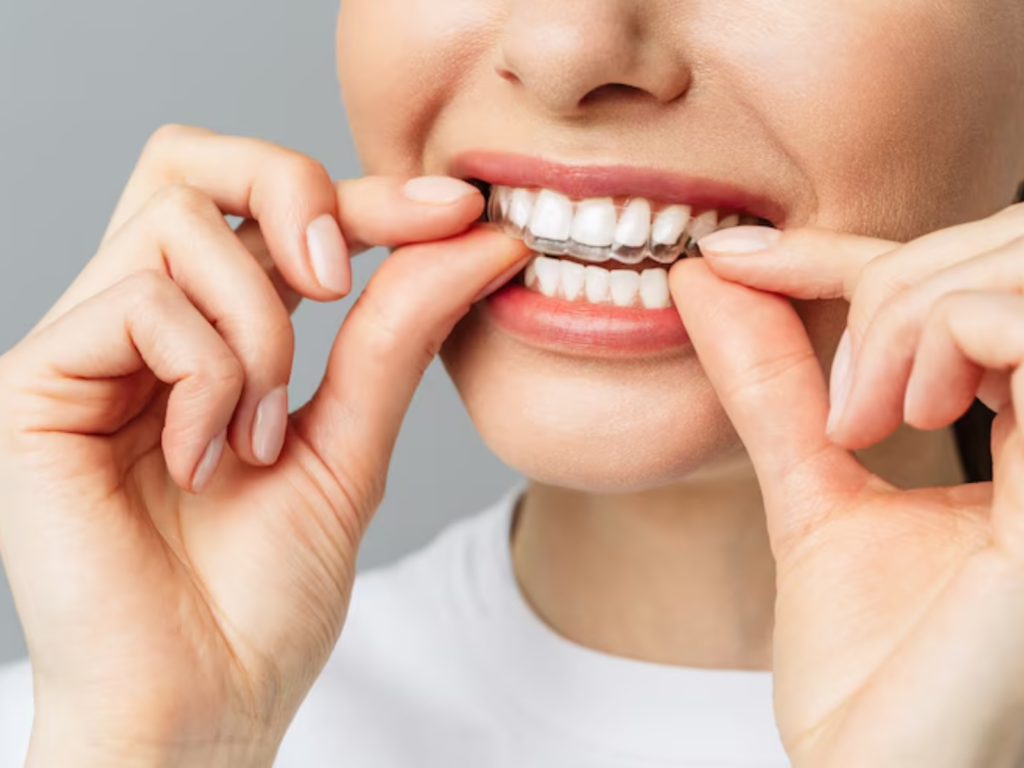Invisalign aligners are a popular choice for straightening teeth due to their discreet appearance and convenience. However, discomfort caused by aligners cutting into the gums can be a common issue faced by wearers.
This blog aims to address this concern comprehensively by providing practical tips and solutions to alleviate and prevent gum irritation during Invisalign treatment.
When aligners cut into the gums, it typically indicates a need for adjustment or careful management. Understanding the underlying causes, such as misalignment or rough edges on the aligners, is crucial for effective resolution. By taking proactive steps and following recommended practices, you can mitigate discomfort and ensure a smoother experience with your Invisalign journey.
By implementing these strategies, you can enhance comfort, maintain oral health, and maximize the effectiveness of your Invisalign treatment. Let’s explore how to manage and prevent gum irritation effectively for a seamless alignment process.
Common Causes of Invisalign Aligner Cutting Gums
Invisalign aligners, while effective for teeth straightening, can sometimes cause discomfort by cutting into the gums. Understanding the common causes behind this issue can help in addressing and preventing it effectively:
- Misaligned Aligners: When aligners are not properly seated or fit, they can exert uneven pressure on the gums, leading to irritation and cuts.
- Rough Edges on Aligners: Rough spots or edges on the aligners can rub against the gums, causing friction and resulting in soreness or cuts.
- Improper Fit: Aligners that do not fit snugly or have gaps can move unpredictably, increasing the likelihood of gum irritation and cuts.

Immediate Steps to Take
When faced with the discomfort of Invisalign aligners cutting into your gums, taking immediate steps can provide relief and prevent further irritation. Here are essential actions to take:
- Remove the Aligners and Inspect for Damage: Carefully take out the aligners and examine them for any rough edges or damage that might be causing the cuts. Inspecting them thoroughly ensures you identify the problem areas.
- Rinse Mouth with Warm Salt Water: Gently rinse your mouth with a warm salt water solution. Salt water helps to cleanse the affected area, reduce inflammation, and promote healing of the cuts or sores caused by the aligners.
- Use Orthodontic Wax or Dental Silicone: Apply a small amount of orthodontic wax or dental silicone to cover any sharp edges or rough spots on the aligners. This protective barrier helps to cushion the gums and prevents further abrasions while allowing the gums to heal.
- Take Breaks from Wearing Aligners: If the irritation persists, consider taking short breaks from wearing the aligners to give your gums time to recover. However, ensure you wear them for the recommended hours daily to maintain treatment effectiveness.
- Contact Your Orthodontist: If the discomfort persists or if you notice significant damage to the aligners, contact your orthodontist immediately. They can provide further guidance and adjustments to ensure your aligners fit properly and comfortably.
Long-term Solutions to Prevent Cutting
When dealing with persistent issues of Invisalign aligners cutting into your gums, long-term solutions are crucial to ensure comfort throughout your orthodontic treatment. Here are effective strategies to prevent cutting over the long term:
- Contact Your Orthodontist for Aligner Adjustments: If you experience frequent discomfort or notice that your aligners consistently cause cuts, it’s essential to schedule an appointment with your orthodontist. They can assess the fit of your aligners and make necessary adjustments to ensure they are snug but not abrasive against your gums.
- Avoid Adjusting Aligners Yourself: Resist the urge to adjust or modify your aligners on your own. This can lead to unintended changes in fit or alignment, exacerbating the problem of cutting into your gums. Always consult with your orthodontist for any adjustments needed.
- Maintain Proper Oral Hygiene: Consistent oral hygiene practices are essential to prevent gum irritation. Brush and floss regularly, especially after meals, to keep your teeth and gums healthy. Clean aligners as directed by your orthodontist to remove any buildup that could contribute to irritation.
- Use Orthodontic Wax or Dental Silicone: If you frequently experience discomfort from sharp edges or rough spots on your aligners, continue using orthodontic wax or dental silicone as a preventive measure. Apply a small amount to problem areas to create a barrier between the aligner and your gums, reducing friction and potential cuts.
- Follow Your Orthodontist’s Recommendations: Adhere to the wear schedule prescribed by your orthodontist. This ensures that your teeth are moving according to plan while minimizing the risk of gum irritation. Consistent wear of aligners as instructed contributes to successful treatment outcomes without compromising your comfort.
When to Contact Your Orthodontist?
When wearing Invisalign aligners, it’s essential to know when to reach out to your orthodontist for timely assistance. Here are key situations that warrant contacting your orthodontist:
- Persistent Discomfort Despite Adjustments: If you continue to experience discomfort or pain from your aligners cutting into your gums, despite attempting adjustments or using orthodontic wax, it’s crucial to consult your orthodontist. They can assess the fit of your aligners and make necessary modifications to enhance comfort.
- Severe Cuts or Sores on Gums: If you notice severe cuts, sores, or ulcers on your gums caused by your aligners, it’s a sign of potential issues that require professional attention. Your orthodontist can examine the affected area, provide appropriate treatment, and adjust your aligners to prevent further irritation.
- Alignment Issues Affecting Treatment Progress: If you observe any changes in the alignment of your teeth or if your treatment progress seems delayed or compromised, contacting your orthodontist promptly is advisable. They can evaluate the situation, ensure your aligners are fitting correctly, and make adjustments to keep your treatment on track.
Ensuring your Invisalign aligners fit comfortably is essential for a successful treatment journey. By promptly addressing any issues of aligner cutting, you can maintain oral health and maximize treatment effectiveness. Remember to follow the recommended steps and consult your orthodontist for personalized guidance to keep your smile transformation on track.




